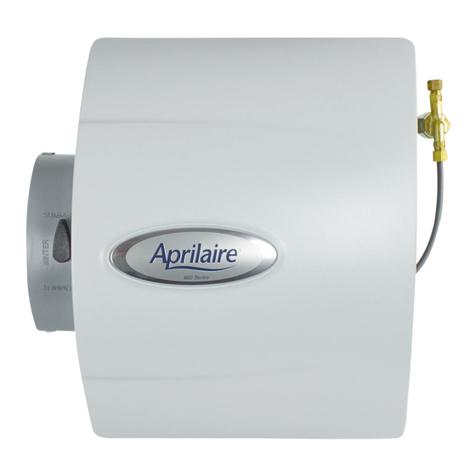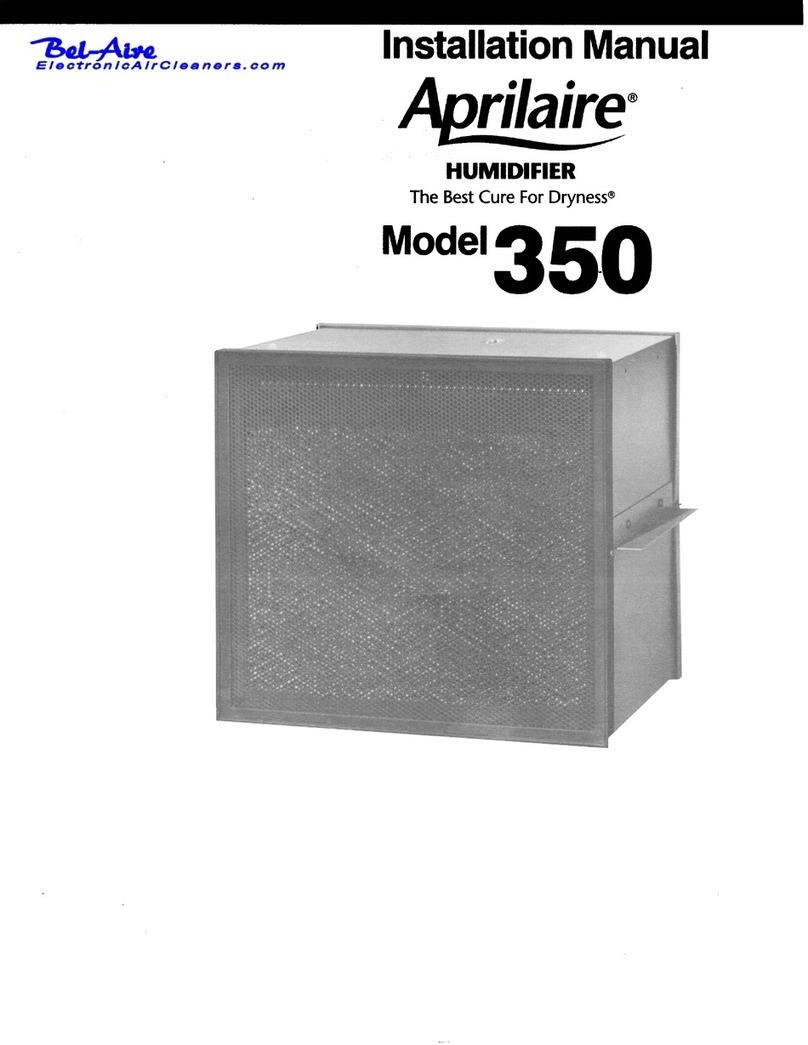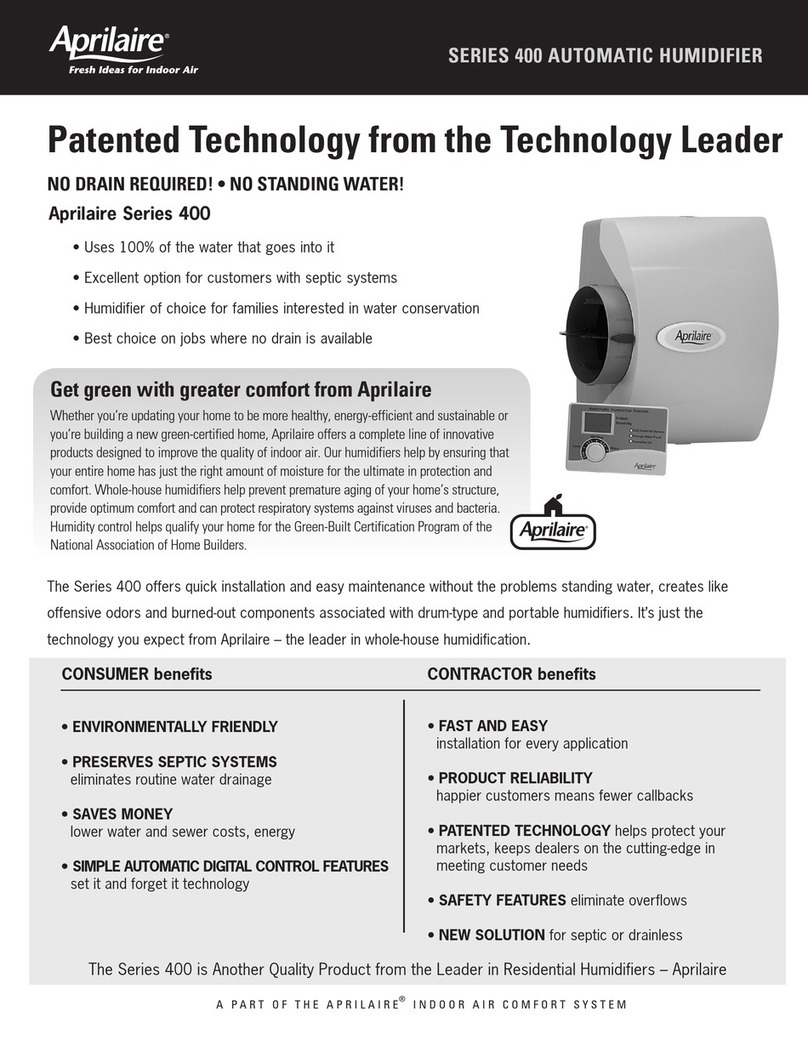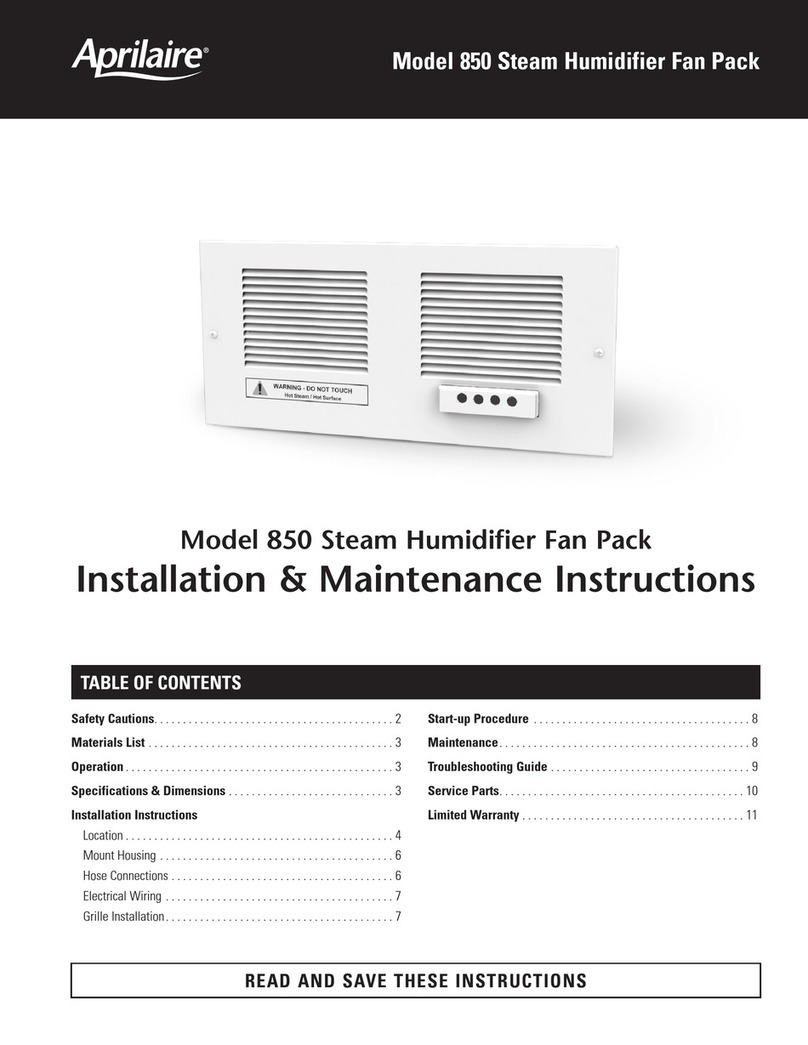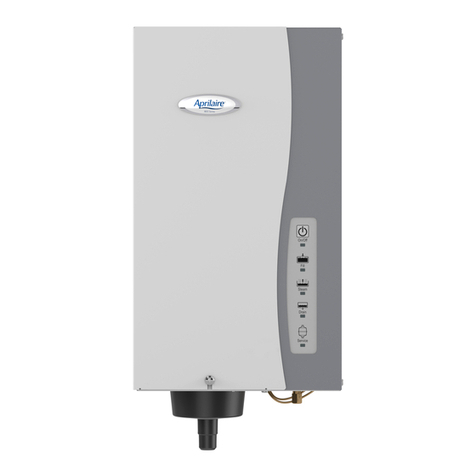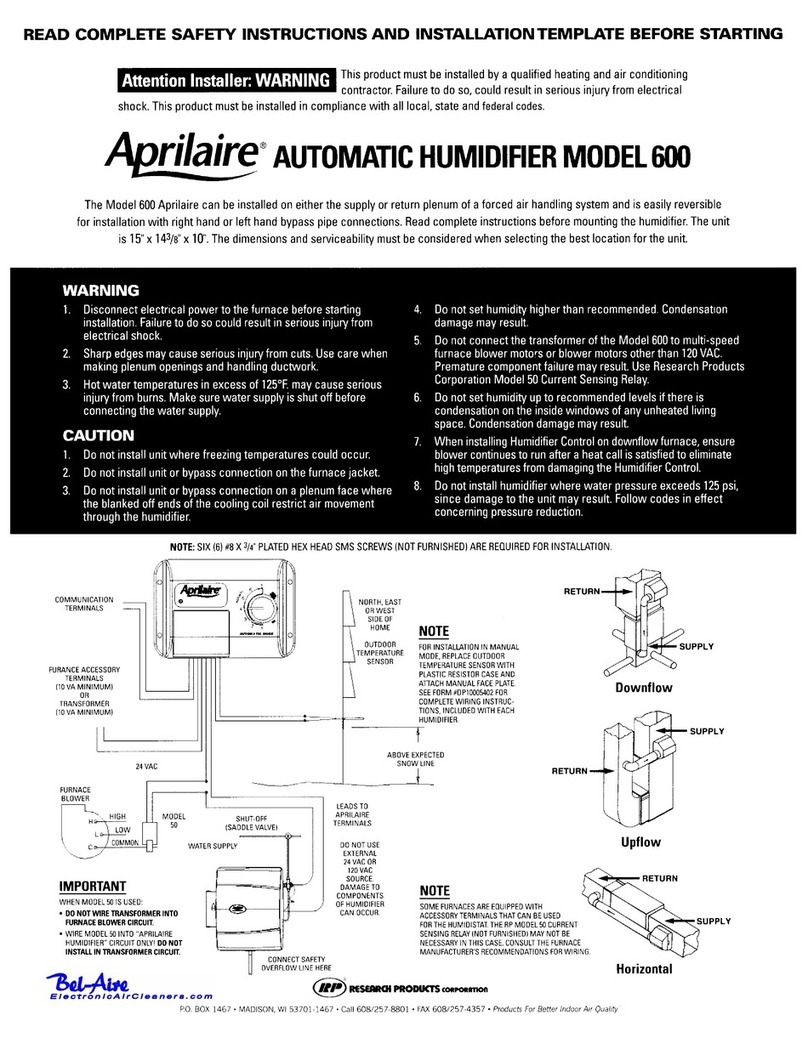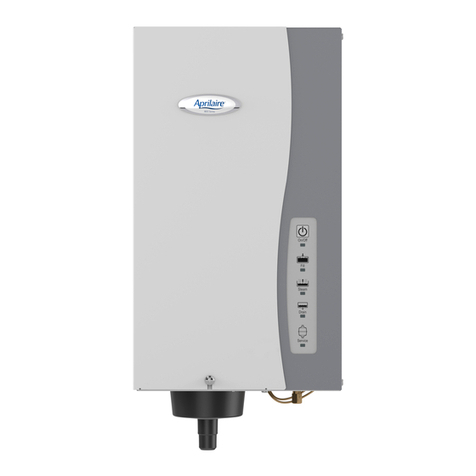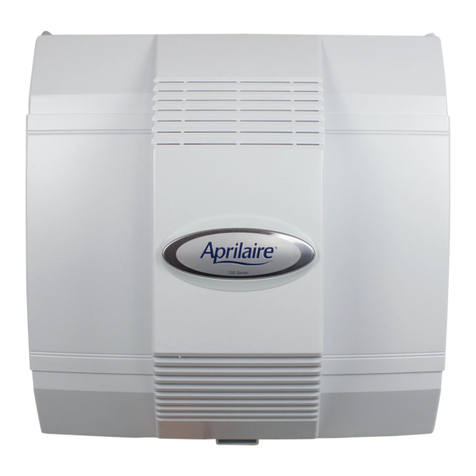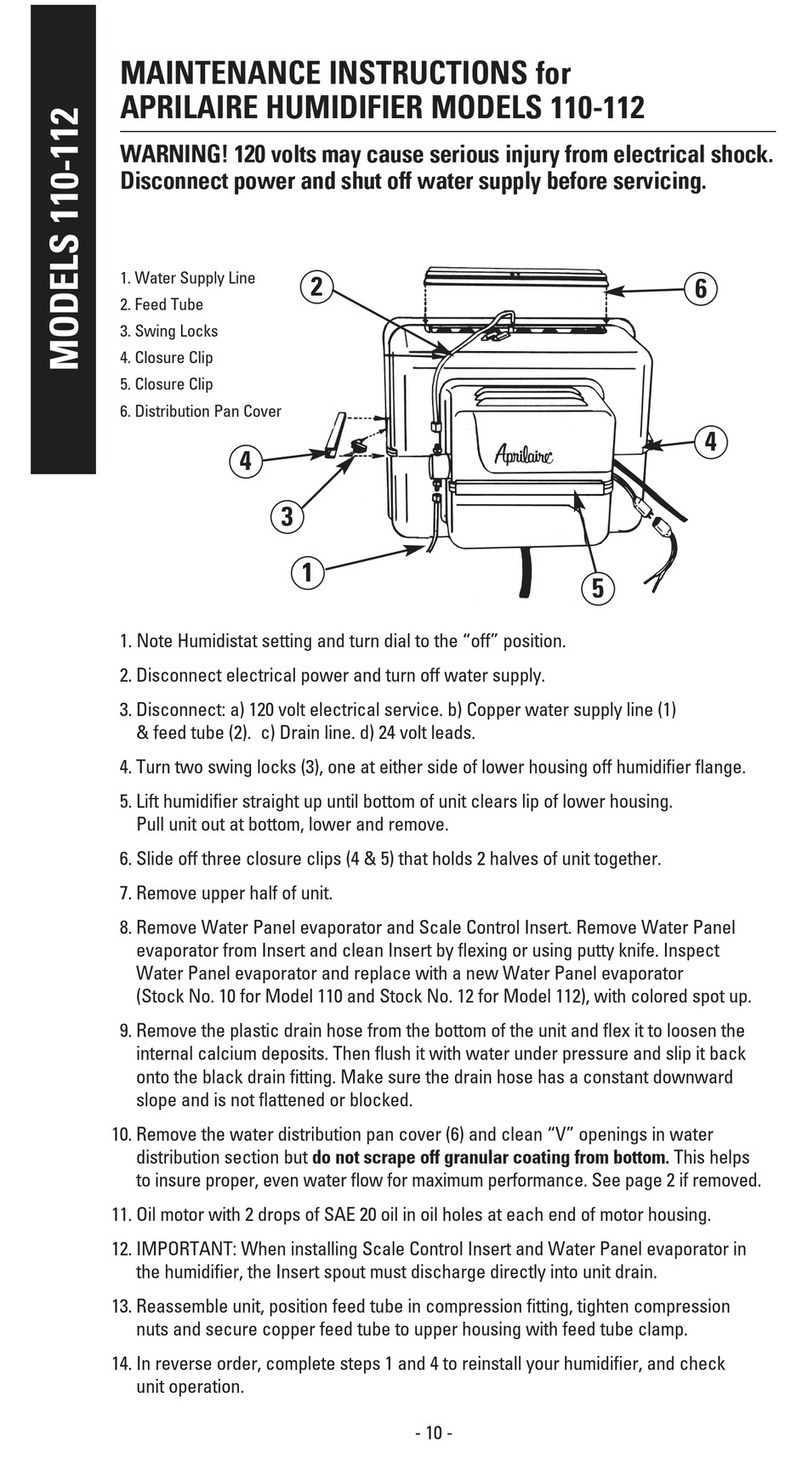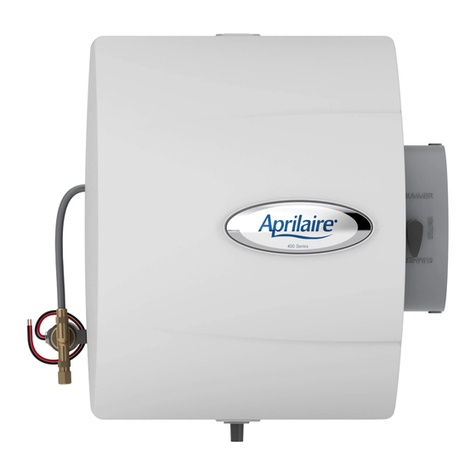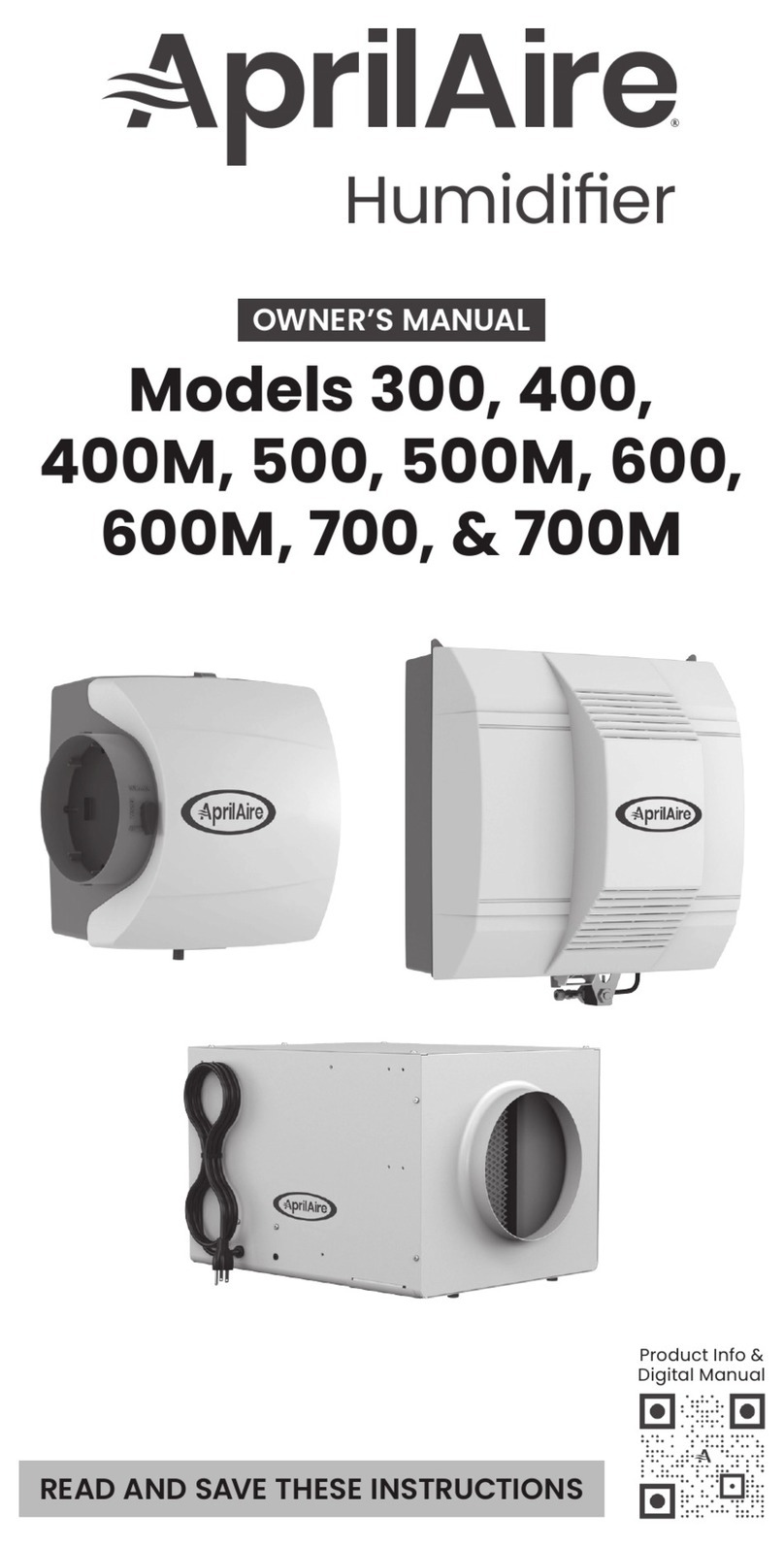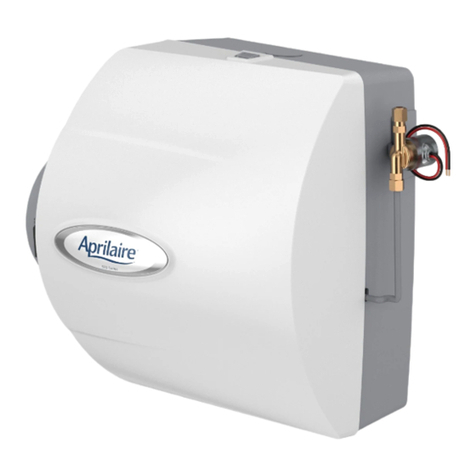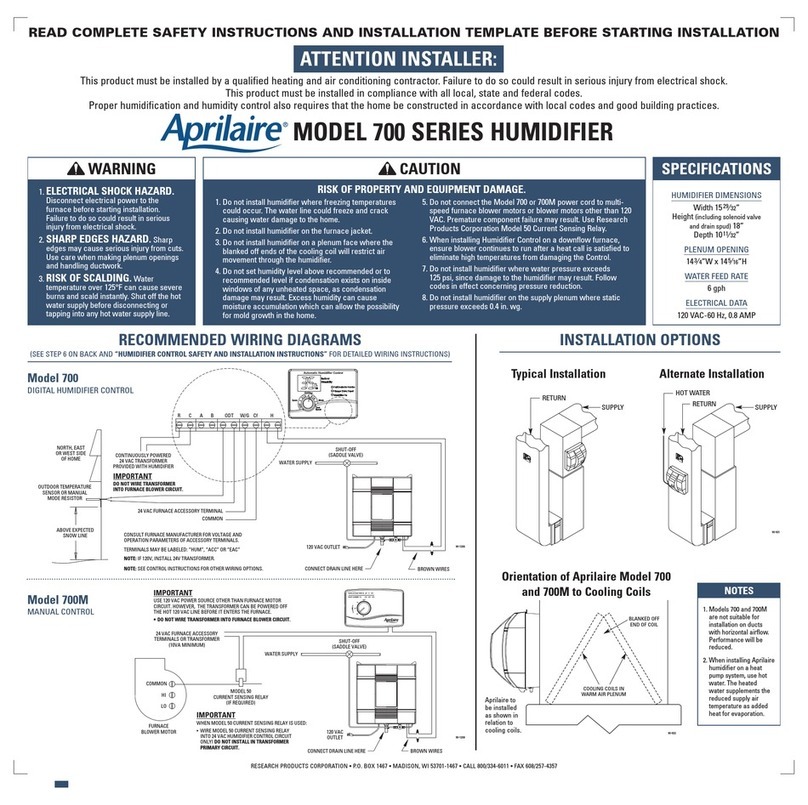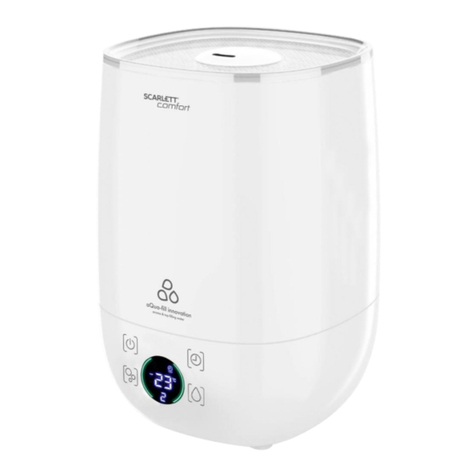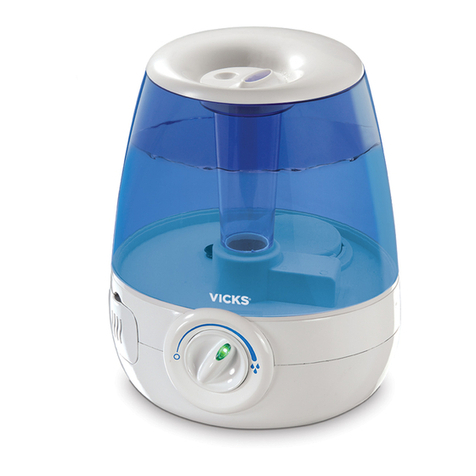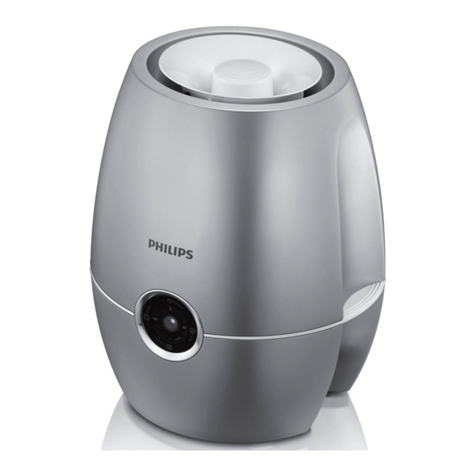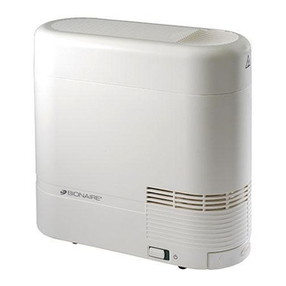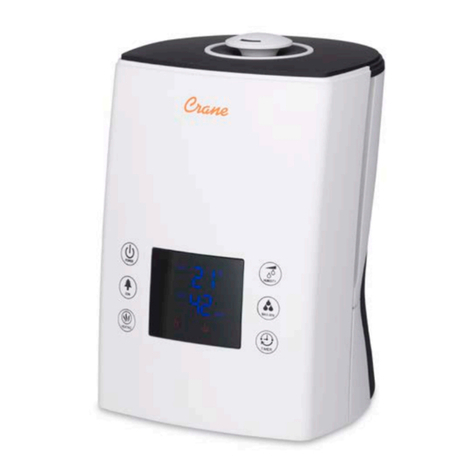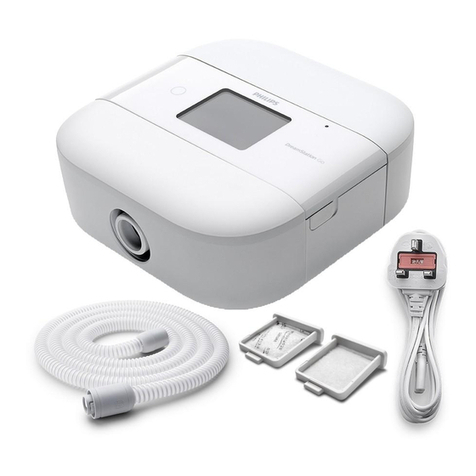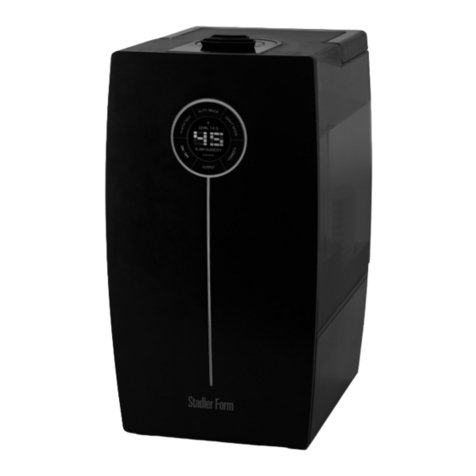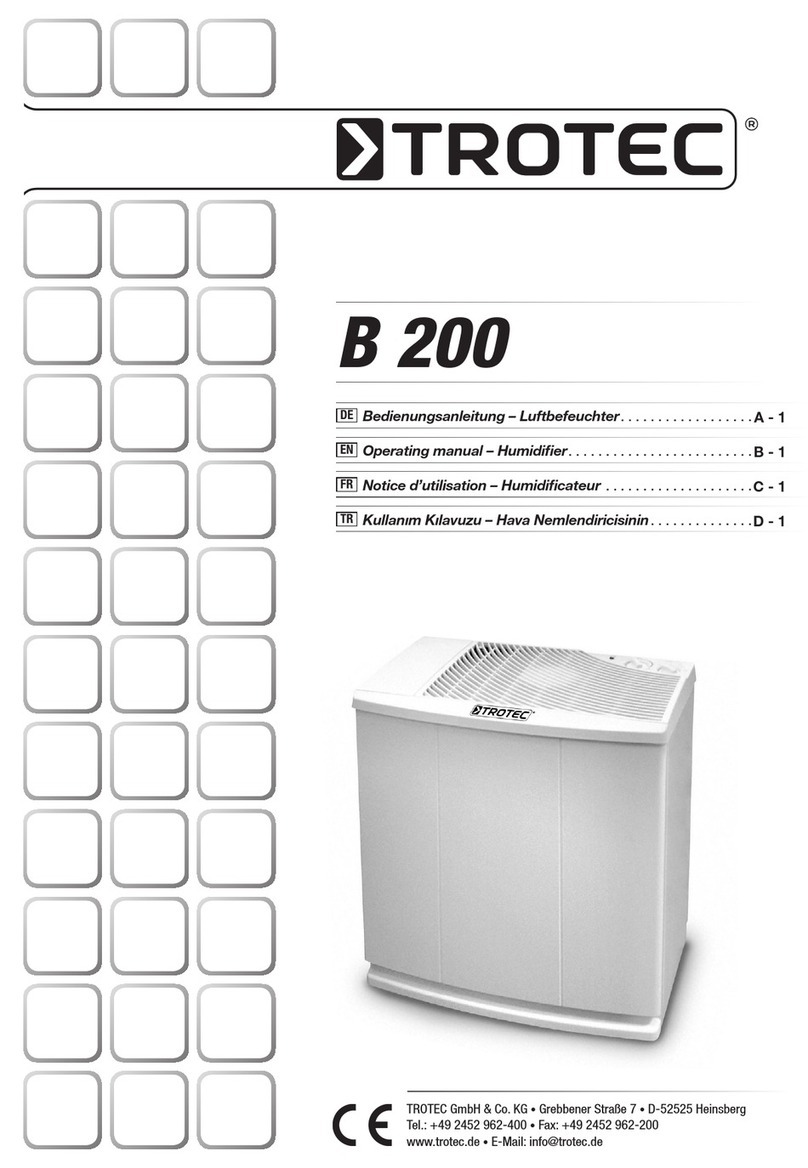
Aprilaire Models 1150, 1160 & 1180
Steam Humidifier Operation
Upon a call for humidity from the automatic control, the water
level control probe will check the water level within the steam
chamber with a series of three probes. The fill valve will open and
the steam chamber will begin to fill. When water reaches the top
probe, the water valve will close. Once the steam chamber is full
the heating elements will energize, causing the chamber water to
heat and come to a boil. This boiling water will create the steam
that will be delivered into the duct system through the vapor hose
and steam distribution tube. As the water is boiled the water level
in the steam chamber will drop, causing the water level control to
allow the fill valve to open and introduce new make-up water.
Over time, the process of boiling the water in the steam chamber
will cause the minerals and impurities in the water to drop out
which can create build-up within the steam chamber, depending
on the hardness and quality of the water. Therefore, the unit will
periodically drain the steam chamber, simultaneously opening the
fill drain to create a "drain and flush" cycle. This will help clean
the steam chamber and reduce the amount of cleaning that is
required during maintenance.
The humidifiers are controlled through a return duct mounted
automatic humidity control that will sense the RH in the return
air. f the actual building humidity level is below the set point,
the control will send the humidifier a signal to begin heating up
and producing humidity. Once this happens, the included air flow
proving switch will check to ensure that the HVAC system
blower is operating. f the blower is operating, the humidifier
will continue to produce steam. f the blower is not operating,
the humidifier will send the HVAC system a signal to turn the
blower on and provide the airflow required to distribute humidity
into the building.
Operational Specifications:
• Internal Control Board—Manages the complete operation of
the humidifier including fill cycles, heater operation, control
signal and drain cycles.
• User Interface/Display anel—Provides power switch for
on/off operation, illuminates LEDs to show fill, drain, and steam
production operations, and provides codes for service diagnostics.
• Water Level Control robe—Manages the water level in the
steam chamber by monitoring the water level and signaling the
internal controller to fill or drain the chamber. ncludes a safety
shut down system to prevent the steam chamber from overfilling.
• Immersion Heaters—Produce steam through the use of
resistive element immersion heaters located in a stainless steel
steam chamber.
• Contactor—Controls heaters in modulating units and is rated
for increased cycles associated with modulating control.
• ower Relay—Controls heaters in on/off units to reduce
the unit noise level.
• Operating Time Monitor—Accumulates actual humidifier
run time to activate the automatic drain and flush cycle,
end-of-season drain function and the steam chamber cool
down period.
• Enable the HVAC equipment fan—Allows the humidifier to
produce steam when there is a call/need for humidification and
the HVAC system is idle by turning the blower on.
• Rapid Start-Up Function—Turns the humidifier on at 100%
output upon a call for humidity to bring the steam chamber to
the proper temperature to produce steam. The humidifier will
then shut off and restart based on the corresponding humidistat
control signal.
• Automatic Drain and Flush Cycle—Drains the steam
chamber periodically and flushes it with clean water to prevent
mineral deposit build-up in the steam chamber.
• End-of-Season Drain—Drains the steam chamber of water
after a 72-hour period in which no calls for humidity take place.
• Cool Down eriod—Tempers the water before draining the
steam chamber to prevent water hotter than 140ºF from being
introduced into the building drain.
• Signal By Others—Accepts an on/off signal, or 1-10 VDC
or 4-20mA modulating signal for unit control.
